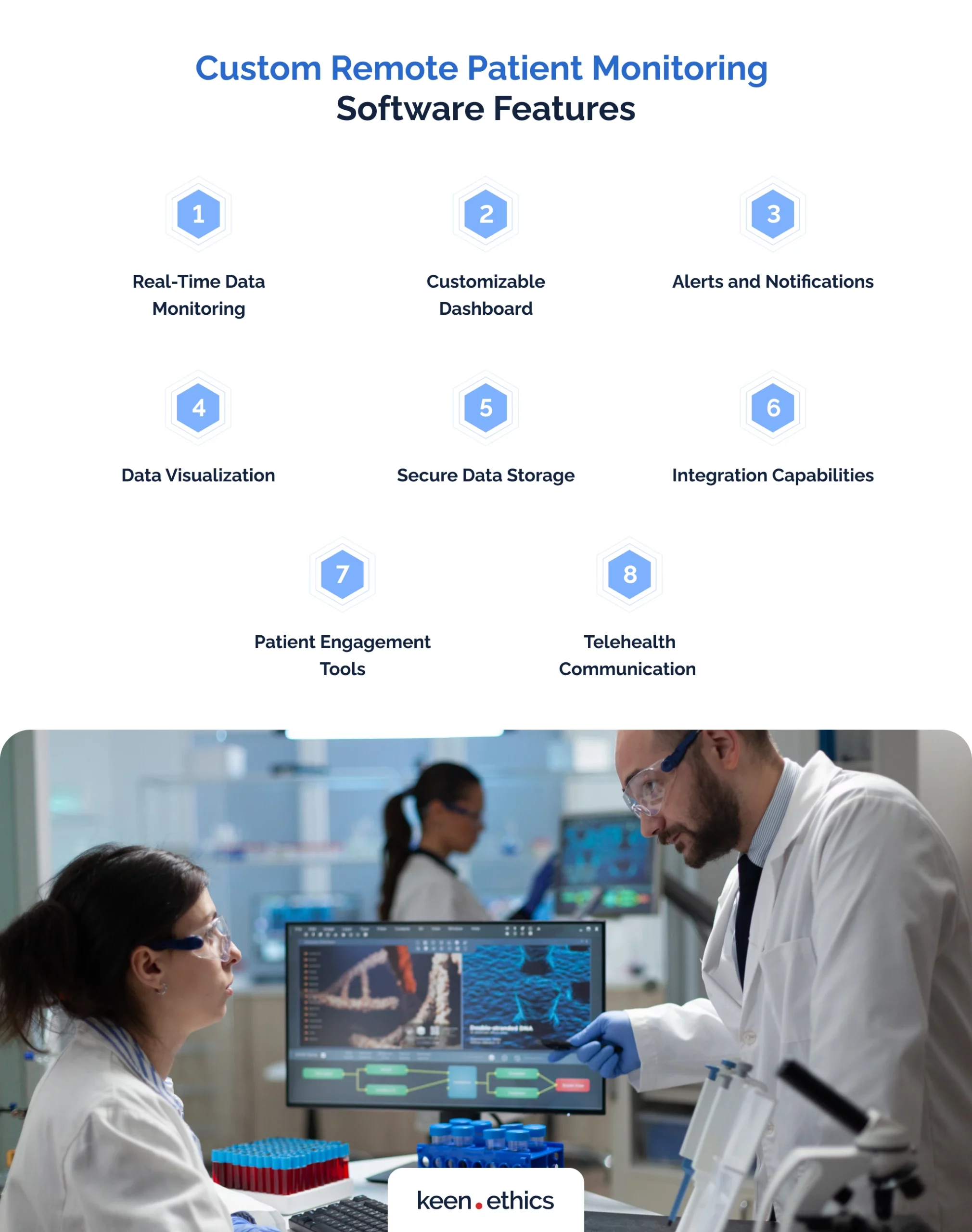User-Friendly Software for Remote Patient Monitoring: Easy Combination and Usage
Wiki Article
The Future of Medical Care: Remote Patient Keeping An Eye On Streamlined
As healthcare continues to evolve, one location that holds tremendous assurance is remote individual surveillance. With an emphasis on improving patient outcomes and streamlining healthcare distribution, remote surveillance is positioned to reinvent the market.Advantages of Remote Patient Surveillance
Remote person tracking provides a wide range of benefits for both medical care providers and patients alike. One significant benefit is the capacity to continuously keep an eye on people' essential signs and wellness data from another location. This real-time tracking enables medical care carriers to discover any worrying modifications or patterns promptly, bring about early treatments and potentially protecting against medical emergency situations. Furthermore, remote person tracking boosts the overall top quality of treatment by offering a more comprehensive and alternative sight of individuals' health standing beyond traditional in-person sees.Furthermore, remote individual surveillance can lead to enhanced client results and satisfaction. Clients can delight in the benefit of getting care in the comfort of their own homes while still understanding that their health and wellness is being carefully kept an eye on. This can lead to boosted individual interaction and adherence to treatment plans, ultimately resulting in better health outcomes. In addition, remote surveillance can lower the demand for regular healthcare facility sees, reducing healthcare costs for both providers and people. Generally, the benefits of remote client monitoring are clear, making it a valuable device in contemporary healthcare delivery.
Innovation Driving Remote Monitoring
In the world of modern healthcare, technical developments play a crucial duty in driving the evolution and effectiveness of remote individual monitoring. The assimilation of ingenious modern technologies such as wearable gadgets, mobile applications, and cloud-based systems has changed the method healthcare carriers remotely check and manage client wellness - remote patient monitoring platform. These technologies allow continuous real-time tracking of essential indications, drug adherence, and other critical health data, enabling prompt treatments and personalized care strategiesOne key innovation driving remote surveillance is the Internet of Things (IoT), which makes it possible for smooth connection between medical gadgets and medical care systems. IoT tools such as smartwatches and cordless sensing units collect and transfer patient data to centralized systems, promoting remote tracking from throughout the world. Artificial knowledge (AI) and artificial intelligence algorithms further enhance remote monitoring by examining vast quantities of client information to spot patterns, forecast wellness patterns, and sharp health care carriers to potential issues.
Effect On Medical Care Distribution
With the combination of sophisticated innovations driving remote client monitoring, the influence on medical care distribution is becoming increasingly profound and transformative. Remote individual tracking enables medical care carriers to offer more individualized and positive treatment to individuals, resulting in boosted health and wellness outcomes and lowered healthcare facility admissions. By remotely tracking essential indications, signs and symptoms, and medication adherence, health care experts can step in early, avoiding problems and enhancing the general quality of treatment.Moreover, remote tracking enhances access to medical care solutions, specifically for individuals in country or underserved areas. People can receive constant monitoring and support from their homes, removing the need for regular in-person visits. This not only conserves time and reduces expenses for both people and healthcare facilities yet also lessens the threat of exposure to contagious illness, a crucial consideration in the present medical care landscape.
Additionally, remote client surveillance enables doctor to far better focus on and designate sources treatment based on real-time data. By identifying high-risk individuals and stepping in without delay, healthcare delivery becomes much more effective and efficient, eventually causing a much more lasting and patient-centered health care system.
Improving Client Outcomes
In addition, RPM permits positive administration of chronic problems, lowering the chance of intense worsenings and health center readmissions. Patients profit from raised ease and convenience, as they can get care in their own homes while remaining attached to their health care service providers. This continuous surveillance not just enhances person rpm software contentment however also fosters a feeling of empowerment and engagement in their very own health and wellness management.
Future Trends in Remote Tracking
Embracing cutting-edge technologies in remote individual tracking is forming the future landscape of medical care distribution. One substantial fad is the increased usage of wearable gadgets and sensing units to gather real-time data, allowing healthcare service providers to keep an eye on people continuously without the need for frequent in-person check outs.
Furthermore, telehealth platforms are ending up being a lot more innovative, enabling virtual assessments, remote medical diagnosis, and remote individual checking done in one incorporated system (best remote patient monitoring software). This alternative technique to remote tracking is enhancing medical care distribution, boosting patient satisfaction, and ultimately, improving overall quality of treatment
Verdict
Finally, remote individual tracking uses many advantages in healthcare delivery, driven by innovations in modern technology. It has the possible to enhance client outcomes and revolutionize the method health care is delivered. Future fads in remote surveillance will continue to form the landscape of medical care, offering opportunities for even more efficient and tailored individual care.Remote patient surveillance provides a multitude of advantages for both health care companies and clients alike. In addition, remote individual monitoring boosts the general top quality of care by providing a much more alternative and thorough view of patients' health and wellness status beyond traditional in-person sees.
Moreover, remote patient monitoring can lead to better person end results and satisfaction. Remote patient monitoring enables medical care companies to supply more positive and personalized care to clients, leading to enhanced health and wellness results and decreased medical facility admissions. Remote client monitoring (RPM) plays a significant function in enhancing client outcomes by offering continuous, real-time data that enables medical care service providers to interfere promptly and adjust treatment strategies as needed.
Report this wiki page